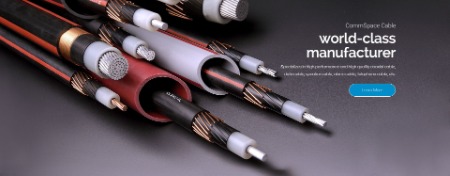There are a variety of different communication cables available to the consumer. These include coaxial, twisted pair, and fiber optic cable. It is important to know the characteristics of each type so you can determine which one will work best for your needs.
Coaxial cable is used for a wide range of applications, including television, digital audio, and computer networks. It is also used as a radio transmission line. This cable is designed to be able to be installed near metal objects, such as buildings, without losing power or signal.
Fiber optic cabling is an excellent choice for long distances and high-speed data transfer. However, installing this type of cable is more difficult than coaxial or twisted pair. For this reason, it is usually installed in an existing utility.

Twisted pair cable is a type of wiring that dates back to the early days of radio. The two wires of this cable are insulated and parallel. They are then wrapped with a metal shield. These types of cables are typically used in home and office networks. Ethernet cables are connected to a router, which in turn transmits network signals to other devices. Some networks use only one type of cable, while other networks have different types of cable.
Twisted pair cabling can be shielded or unshielded. Shielded cables are more popular and offer greater protection from outside interference. Unshielded versions are less expensive. Optical fiber cabling is immune to the effects of light and electrical interference, which makes it an excellent option for environments with high-levels of electromagnetic interference. Optical cable is also much more flexible than other types of networking cable.
















